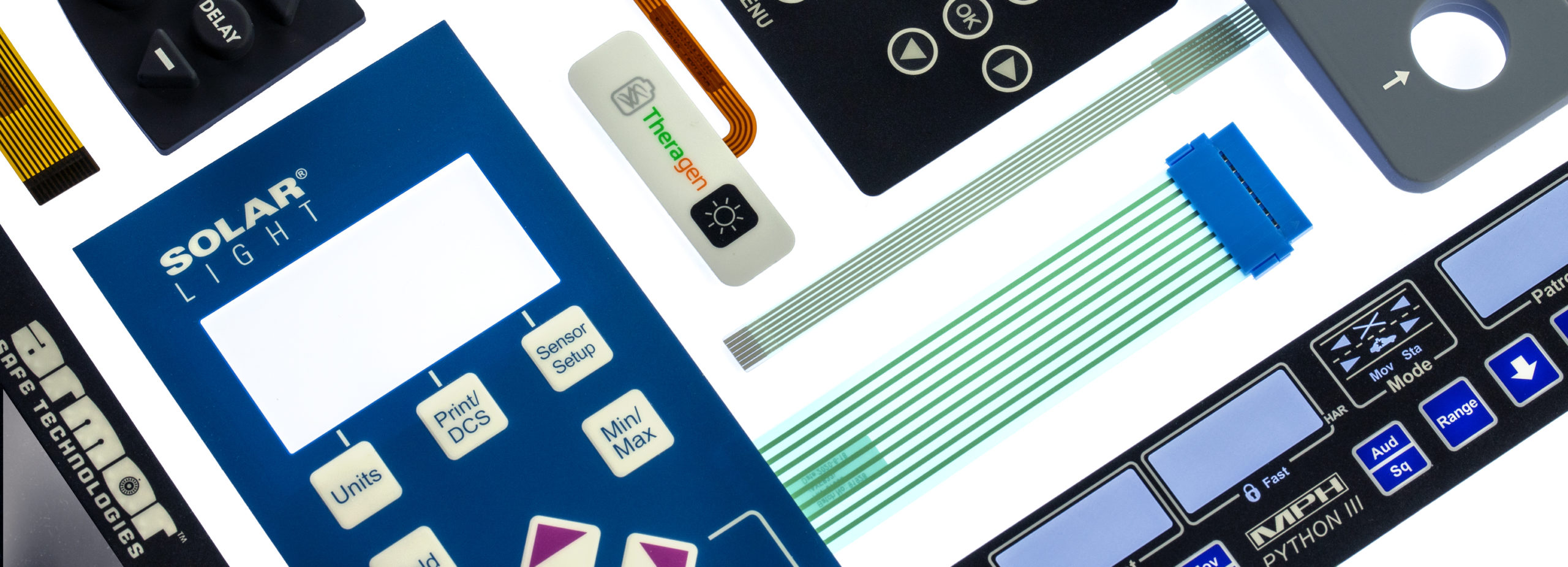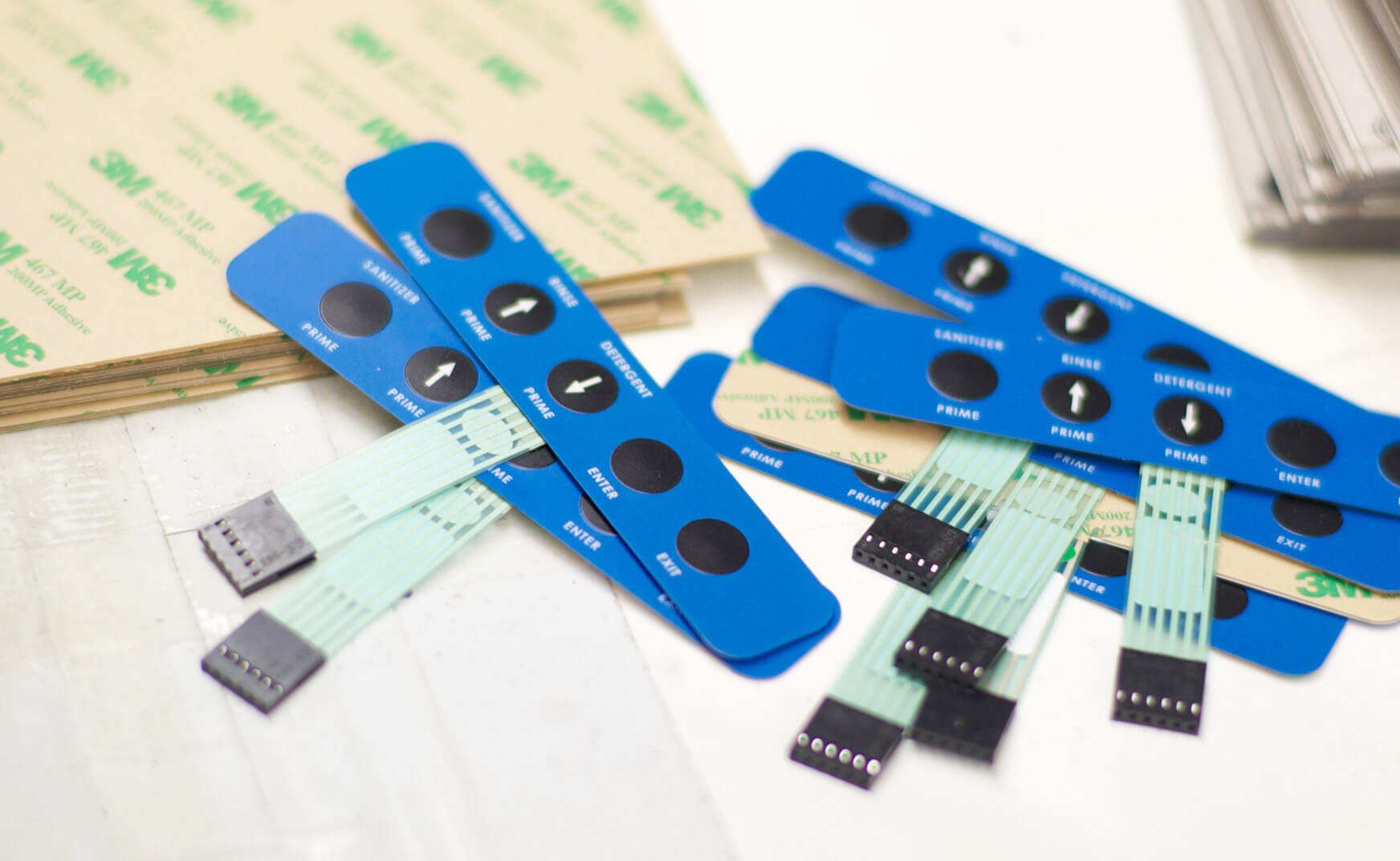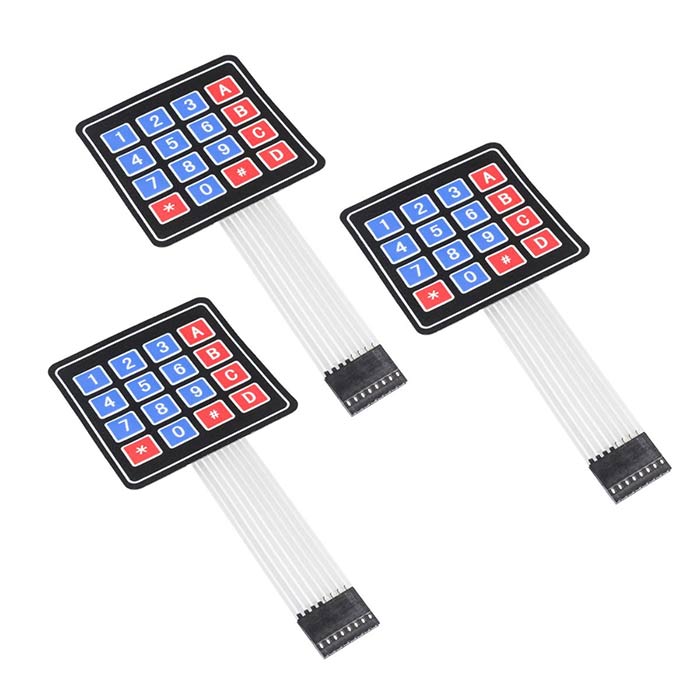You’ll see the difference when collaborating with a high-quality membrane switch manufacturer.
You’ll see the difference when collaborating with a high-quality membrane switch manufacturer.
Blog Article
Everything About Membrane Change: Understanding Its Style and Functionality
When you think regarding the control interfaces in contemporary devices, membrane buttons often come to mind. Allow's discover what collections membrane layer switches over apart from various other control systems.
What Are Membrane Buttons?

Membrane layer switches can likewise be customized concerning shape, dimension, and graphics, permitting suppliers to produce distinct user interfaces tailored to specific items. Overall, membrane layer switches play a substantial role in enhancing individual experience throughout a large range of applications.
Exactly How Membrane Changes Job
When you push a key on a membrane button, it triggers a straightforward yet reliable device. The leading layer, usually constructed from flexible product, lowers onto a conductive layer under it. This activity bridges the gap in between conductive traces, completing an electric circuit. As quickly as the circuit shuts, it sends a signal to the gadget's controller, which translates your input.
You'll notice that the responsive feedback differs based upon the switch layout, providing either a soft click or an extra noticable feedback. As soon as you release the key, the membrane layer returns to its original placement, resuming the circuit and quiting the signal. This procedure occurs almost instantly, making certain a receptive customer experience.
Membrane switches are prominent because of their longevity and resistance to dust and wetness, making them optimal for various applications, from household home appliances to clinical devices. Understanding this operation helps you appreciate their extensive usage.
Secret Elements of Membrane Switches
Understanding the key components of membrane buttons is basic for understanding their functionality and design. The protective layer guards versus ecological factors and wear, extending the switch's life expectancy. By understanding these components, you'll gain insight into just how membrane changes operate and their significance in numerous applications.
Materials Used in Membrane Change Style
The efficiency and toughness of membrane layer switches over heavily depend on the materials made use of in their design. You usually experience polyester and polycarbonate as key substrates because of their outstanding strength and versatility. These materials withstand scratches and chemicals, making them perfect for demanding settings.
The conductive layers frequently use silver or carbon, picked for their dependability and conductivity. membrane switch manufacturer. Silver supplies superior performance, while carbon is an affordable option. For the overlay, you could consider a matte or shiny coating, depending upon your aesthetic requirements and individual experience
Make specific to select adhesives that withstand ecological elements like temperature and humidity. Choosing the right products will guarantee your membrane layer switch stands the examination of time.
Layout Considerations for Membrane Layer Switches
While making membrane buttons, it's essential to take into account numerous factors that affect their performance and individual experience. Beginning by concentrating on the format and switch size; make particular they're instinctive and very easy to navigate.
Don't overlook the visuals layout; clear labeling and color contrast are significant for visibility. Validate your layout fits ecological aspects, like wetness or Bonuses temperature level variations, which might affect performance. Lastly, keep in mind the relevance of testing prototypes with real users to collect responses and make required modifications. This iterative procedure helps you fine-tune the design, confirming it meets both practical and visual requirements successfully. By very carefully considering these components, you'll develop a membrane layer button that boosts usability and fulfillment.
Applications of Membrane Switches
Membrane layer buttons are functional components found in numerous applications, from industrial equipment to customer electronics. You'll see their influence in view publisher site makers that require sturdy interfaces and in devices that profit from sleek styles. Recognizing these applications helps you appreciate the capability and usefulness of membrane switches in day-to-day technology.
Industrial Equipment Usage
When you're looking to boost the functionality of commercial devices, membrane buttons provide a trustworthy solution that integrates sturdiness with easy to use design. These buttons are perfect for severe environments, giving resistance to dirt, moisture, and chemicals. Embrace membrane buttons to simplify your operations and boost general performance.
Customer Electronic Devices Combination
In the domain name of consumer electronic devices, membrane switches play a necessary role in boosting customer communication and gadget capability. Membrane layer buttons likewise ensure sturdiness and resistance to dust and moisture, prolonging the life-span of your electronic devices. By picking membrane layer switches, you boost not simply the performance yet likewise the style of your gadgets, making daily interactions smooth and satisfying.
Advantages and Downsides of Membrane Buttons
While membrane switches supply a range of advantages, they likewise feature some disadvantages that you must take into consideration. One significant advantage is their small design, making them optimal for space-constrained applications. They're likewise cost-effective, supplying a long lasting remedy with a low manufacturing cost. Furthermore, their smooth surface is very easy to tidy, boosting hygiene in settings like hospitals.

Membrane switches can have a shorter life expectancy compared to mechanical switches, specifically under heavy usage. They can additionally be less tactile, which could affect individual comments during procedure. Balancing these pros and cons will aid you figure out if membrane layer switches are the right fit for your project.
Often Asked Concerns
For How Long Do Membrane Layer Changes Typically Last?
Membrane layer switches over normally last between 5 to one decade, relying on usage and ecological conditions. You'll desire to review variables like wear, exposure Full Report to wetness, and temperature changes to gauge their long life properly.
Can Membrane Layer Switches Over Be Personalized for Details Designs?
Yes, you can customize membrane buttons to fit particular styles (membrane switch manufacturer). You'll have the freedom to select shades, shapes, and designs that match your job's demands, guaranteeing they blend effortlessly with your general visual
What Is the Price Range for Membrane Switch Manufacturing?
The expense variety for membrane layer switch production commonly drops in between $1 and $10 per unit, relying on aspects like layout complexity, quantity, and products. You can obtain quotes from producers to find the most effective alternative.

Are Membrane Layer Switches Water-proof or Immune?
Membrane layer buttons can be created to be waterproof or resistant, relying on products utilized and construction approaches. If you require them for damp environments, guarantee you specify those requirements throughout the layout process.
Exactly How Do Membrane Layer Changes Contrast to Conventional Buttons?
Membrane switches are typically thinner and a lot more versatile than conventional buttons, supplying a streamlined design. They're frequently simpler to clean up and integrate, yet may not offer the responsive responses you're made use of to with mechanical options.
Verdict

Report this page